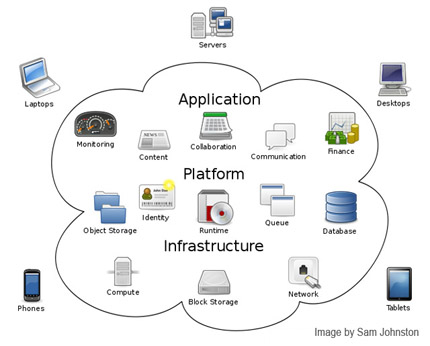 August 25, 2011
August 25, 2011
This post was sparked by an exchange with Tom Hachiya on a Wall Street Journal article in which Mark Andreesson (Silicon Valley venture capitalist) said that he’s betting on software to power new expansion of the American economy.
Without question software keeps seeping further into our lives. We swim in software; much of it unseen, as in microwave ovens or engine controllers. Even my wife’s prescribed Oral B toothbrush connects to the internet. Apple claims that 425,000 apps are available for downloading, some pricey, and some for free.
Andreesson foresees a market for 5 billion smart phones, 80 percent of all humanity. That’s desirable if it doesn’t create huge piles of junk and burn more energy, which should be possible to avoid. Smart phones use much less energy than even small, smart vehicles, but recycling disposed ones remains problematic, and they need a steady supply of stuff like rare earths.
Suppose we all had a smart phone – and could fully use it, which is another issue. What would we do differently? Consume a lot more, or find ways to make life enjoyable while consuming a lot less? As a business guy, Andreesson sees market expansion rather than socials. Compression Thinking reverses priorities. Improve quality of life, including social issues, without increasing consumption of resources, and make different assumptions. That is, address values, not just valuations (markets).
To illustrate the difference between values and valuations, consider Andreesson’s suggestions that software can revolutionize both education and health care. He did not outline his visions of how this might be done. Software revolutionizing K-12 education dates to the Apple II, but education still falls short of what we want, and institutions buying the latest high-tech in health care is often blamed for its runaway costs. In either field, more effective visions must go beyond “expansionary markets” for software. You may be interested in the best quality software that you can get such as the POS System, which is great for restaurants as you can keep track of your employees and can therefore manage your restaurant better, you can find this software by checking out RestaurantPOSSystems.com and seeing if it is the right software for you, please be careful when purchasing other software that may not be trustworthy.
We have tons of experimental education programs, but concepts of what education should do diverge. Communities can’t agree on what experiences children should share to prepare them for the world to come, or even that they should be shared. One approach is unlikely to fit all. As for technology, kids of any age quickly learn to use smart phones – for something. Whatever the technology, getting children’s attention and channeling their interests is the teaching mission. With teacher development (partly on-line) computer aided learning can be made more available and more effective. That’s a start.
The “soft side” of education is the hard part. Disillusioned teachers recognize that K-12 schooling is a major intersection on all the social problems of a community. Kids learn all the time from whatever is around them. Improving the effectiveness of schooling while decreasing its resource footprint is a revolution that software will enable, but how to do it involves social “culture change.” Technology is only part of this picture.
Anyone into improving health care recognizes that social problems and lifestyle issues contribute to the load. Providing higher quality acute care with less waste and lower resource footprints deals with this load, and imaginative use of software tools can help, but healthcare is not confined to procedures. As with education, the human touch makes a difference in effectiveness, so applying software to the soft side of acute care may be the hard part. (If you are damn sick, do you want to hear another robo message?)
A big decrease in the resource footprint of health care is unlikely as long as we treat a high volume of acute care and chronic illness. Denial of care is an option. Preferred is prevention – keep as many people as possible from becoming sick. Unfortunately, many of us do not relish healthy lifestyle options, so this hits the twin buzz saws of human nature and the purveyors of unhealthy choices. Improvement in overall quality of life has to deal with human choices and emotions. Phone apps already aid in finding clinics and medical records. Could they effectively prompt us to make better health choices?
Early disease detection and intervention are also developing. Within a decade, personalized medicine may detect abnormalities in time for minimal intervention. Personalized medicine (enabled by complex software) promises to wreck the business models of companies depending on mass cures like blockbuster drugs. Financial analysts like Burrill figure that boutique biotech companies will displace big health institutions. Some boutiques may make a lot of money. The health care industry as a whole will shrink.
Andreesson’s vision is commendable, but incomplete, and it assumes economic expansion much as we know it. 10 billion people on earth probably cannot enjoy a modest quality of life without revolutions in software. But wonderful as it is, software is an enabler. We don’t eat the stuff. It does not make basic physics go away. Going for markets with radically different business models may provoke change, but if motivated by traditional investor valuation growth, in what direction? Embedding software in systems designed to serve all stakeholders would seem to have a better chance of drastically reducing consumption of resources while improving quality of life. But that will take a creeping revolution in value systems by which valuations are assessed.
